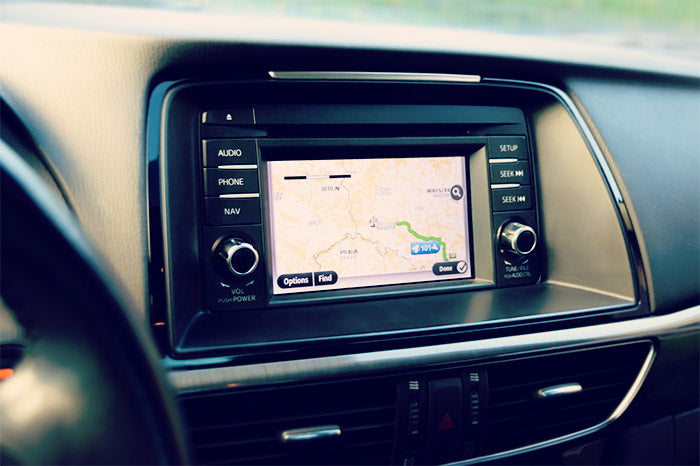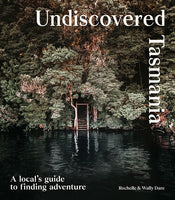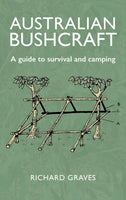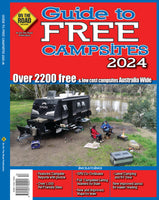What to Look for in an Off-Road GPS & How to Use It

 During an off-road trip, your GPS can work as hard as your vehicle. Without it, you would be lost - literally.
If you are planning to do some four-wheel driving, then it’s an off-road GPS that you need. If you take a GPS that’s better suited to navigating around the metro area off-road with you it could cause serious problems out in the bush.
We recommend choosing a GPS model that can cope with you being out in the middle of nowhere and still show you the way to go.
During an off-road trip, your GPS can work as hard as your vehicle. Without it, you would be lost - literally.
If you are planning to do some four-wheel driving, then it’s an off-road GPS that you need. If you take a GPS that’s better suited to navigating around the metro area off-road with you it could cause serious problems out in the bush.
We recommend choosing a GPS model that can cope with you being out in the middle of nowhere and still show you the way to go.
4x4 GPS Stand Alone Vs In-Dash GPS
One of the first decisions you need to make is whether you prefer an in-dash GPS or a stand alone. Deciding which way to go will depend a lot on your vehicle. Some people like to have the car do everything – music, maps and Bluetooth. However, not all 4WD vehicles have a good size screen while others are locked to third-party input. Some people will get around these problems by purchasing an aftermarket in-dash unit so they can load any brand of a map they like. Others prefer to use a stand-alone GPS. The portable GPS allows them to move it between vehicles when they sell, use it while walking, take it out to research tomorrow’s route in front of the fire and lend it to friends or family.
Others prefer to use a stand-alone GPS. The portable GPS allows them to move it between vehicles when they sell, use it while walking, take it out to research tomorrow’s route in front of the fire and lend it to friends or family.
Off-Road GPS Vs On Road GPS
It might seem like all GPS units are the same. Their job is to get you from point A to point B, but that’s not the case. Some GPS’ are designed to be used on-road only, and if you try to use it in the bush, you will push it past its limits. If you are going to be using your GPS off-road, you aren’t going to be too worried about features like lane departure and local restaurant listings. You need to be more concerned about a glare-free screen so you can read the map on a sunny day and listings for tracks. The latest GPS units are sophisticated enough that they can hold thousands of pieces of information on roads, tracks, points of interest and accommodation.
The latest GPS units are sophisticated enough that they can hold thousands of pieces of information on roads, tracks, points of interest and accommodation.
Roads
Some on-road GPS will list if it’s a bitumen or unsealed road but little more. When you are off-road, you ideally want topographical map information so you can see 4WD tracks, unsealed roads, contour lines and geographical features. It’s handy to be able to see the terrain before deciding which route you will take, particularly if you are towing or having trouble with your vehicle. In the past, you would have a paper map for this level of detail, but with the right GPS, it’s all on screen.Campsite Listings
Having access to thousands of free and low-cost camps as well as caravan parks across Australia means you don’t have to do your research before you leave home. You can make a decision on where to stay that night. Some campsites include photos, detailed descriptions and facility icons, so you choose a site based on the availability of showers, toilets, fireplaces, BBQ, power, access for towed and big rig vehicles, mobile phone access, whether they are pet-friendly and your budget.Where to Stop Along the Way
The GPS should also give you access to other relevant information so you can plan where you will stop for fuel, rest breaks and dump points. Being able to see attractions/points of interest listed can help you decide what you want to stop and check out. If someone told you about an attraction you are keen to look at, you want to be able to just type in the name to search for its location rather than need to know the address. Once you get into town, you want your off-road GPS to be still able to provide full street, turn by turn navigation, speed and school zone alerts plus powerful road and point of interest search functionality.GPS Technical Support is Important
Most GPS units come with a user manual you can save on your PC or phone, so you have access when you need it. Video tutorials are also a great way to learn something quickly so choosing a model with good support might be important if you learn visually. But if you and technology don’t always get along, check that your GPS comes with appropriate tech support. Online or telephone tech support can help you find your way around the device or fix a problem. Just remember to register your device so you can use the support service and use your warranty if you need it.Best Off-Road Navigation System?
We’ve been selling GPS navigation systems for more than a few years now. We think the best 4WD GPS award should go to the Hema Navigator HX-1. It comes pre-loaded with more than 110 4WD and touring maps. It is the only one that comes pre-loaded, so it’s ready to use out of the box. Hema has been working on their maps since 1996, continually updating them. The maps cover all of Australia with base, state, regional, 4x4 and national park maps. Their 150k map and 1:1 million road maps are also included. New Zealand touring maps are also included in case you are taking it for a trip across the ditch. There are an incredible 45,000 points of interest to check out. 4WD GPS navigation systems have come a long way. The touchscreen means you can use your finger to type addresses and move around the maps easily. The battery life increased to six hours with this model.
You can read our in-depth review of the Hema Navigator HX-1 when it was launched late 2016. If you have bought a Hema GPS, don’t forget to register it.
4WD GPS navigation systems have come a long way. The touchscreen means you can use your finger to type addresses and move around the maps easily. The battery life increased to six hours with this model.
You can read our in-depth review of the Hema Navigator HX-1 when it was launched late 2016. If you have bought a Hema GPS, don’t forget to register it.
Practice Using your GPS Before you Hit the Track
Whichever 4WD GPS navigation system you decide on, spend some time using it before you must rely on it. All units are different, so even if you are familiar with one, it doesn’t mean you will be proficient with the next unit you buy. Spend some time using your GPS around town or on a short trip before you put your hand up to be navigator at the front of three vehicles. No one wants to wait while you fumble your way through the screens looking for the map you want. If you have any queries about GPS, contact the expert at The Chart & Map Shop by calling (08) 9335 8665 or contact us online.Featured collection
Categories:
4wd
news
Posted on: Sep 27, 2018








Comments